
Acoustic instruments and feedback devices in old stone spaces, rich multi-layered music recorded during a residency in the Czech Republic by the trio of George Cremaschi (double bass and electronics), Irene Kepl (violin and electronics) and Petr Vrba (trumpet, clarinet and electronics).
Out of Stock
Quantity in Basket: None
Log In to use our Wish List
Shipping Weight: 3.00 units
Sample The Album:
George Cremaschi-doublebass, electronics
Irene Kepl-violin, electronics
Petr Vrba-trumpet, clarinet, electronics
Click an artist name above to see in-stock items for that artist.
Label: Another Timbre
Catalog ID: at104
Squidco Product Code: 23227
Format: CD
Condition: New
Released: 2016
Country: UK
Packaging: Cardboard Gatefold
Recorded a in monastery in Bechyne, and a hall in Valdstejn Loggia in Jicin, both in Czech Republic, in 2015, by George Cremaschi and Ladislav Zelezny.
"Four pieces from a residency in the Czech Republic by the trio of George Cremaschi (double bass and electronics), Irene Kepl (violin and electronics) and Petr Vrba (trumpet, clarinet and electronics). "We're concerned with using the acoustics of the resonant spaces we seek out as a sort of additional member of the group, composing with this interaction particularly in mind." Acoustic instruments and feedback devices combined in old stone spaces, such as the courtyard of a monastery, creating a rich multi-layered music akin to a sound installation."-Another Timbre
"Interview with George Cremaschi, Irene Kepl & Petr Vrba
Could you tell us how the Resonators project came about, and what its aims are?
George: Irene initially invited us together to make a proposal for a concert series in a Viennese church which has good acoustics, so we submitted a plan for working with the particular architecture and sound of the space. It ended up working well and so we continued. Overall we're concerned with using the acoustics of the resonant spaces we seek out as a sort of additional member of the group, composing with this interaction particularly in mind. For myself the aim is to continue to develop my work with amplification and feedback in highly reverberant spaces, which has been ongoing for some time.
Irene: George, Petr and I had experience together individually but so far we hadn't played together as a group. I thought it could be nice to work together because our approach seemed to be similar. I had started to work with feedback at that time, so we all had both acoustic instruments and feedback/electronic devices. The music is not about showing or performing architecture, it's about focusing on the inside of sound in relation to the space and working it naturally into something that is perhaps more like a sound installation. I appreciate the playful approach that Petr, George and I share, combined with being really serious and open about what we're exploring, leaving enough space to let the sound evolve in the room.
So what rooms or spaces did the trio choose to work with?
Petr: For the series of Czech concerts where these recordings were made, there was a small church, two monasteries, and a hall in the former summer palace of a royal family - all dating back several hundred years. While age is not necessarily a prerequisite for good acoustic conditions, there is something special about how sound reacts in old stone structures.
The resonance of each kind of space will have its own characteristics, and this is especially critical with feedback which can easily become harsh and distorted, all the more so when multiple instruments are involved. In the monasteries we used the ambit, the large square hallway adjoining the church, which proved to have a quite special sound. The long hallways, open through arches to the central courtyard, amplified the sound but also allowed it to breathe.
What did the audience make of the concerts?
George: The nature of the audiences was quite diverse - the concerts in Prague and Vienna were attended by a more 'inside' audience, and were well-received. The other concerts were in smaller towns, and as such had a perhaps less knowledgeable audience, but they were equally well-received, especially in the monasteries where we invited the attendees to wander around the halls and courtyard and treat the event as more of an installation. This worked really well, especially with older folks who initially thought they were attending a classical music concert, and with a large group of theatre students who happened to show up at one performance and afterward were super enthusiastic.
George, as an American, how do you come to be in the Czech Republic?
George: My relationship with the Czech Republic goes back to the late 90s, when I first came to visit some friends from California who had started an arts residency/cultural centre in a small town south of Prague. I quickly fell in love with the place - both the centre and the town - and started coming back every summer to work and curate at the centre and also to play concerts around Europe. Over time I was working more in Europe than the US, at least in terms of being paid decently as a musician, and as the endless state of war asserted itself in the US along with the rising cost of living and dwindling artistic opportunities of the places I'd be willing to live in such as New York or San Francisco, the choice to live in Czech/EU just became obvious. One major attraction is directly related to this recording: the abundance of fantastic spaces to play in central Europe, old churches and monasteries that hardly exist in the US, where the average place to play has little to do with fine acoustics.
I know that you are all involved with improvisation, but the pieces on the CD are attributed to one or other of you as composed works. There's obviously a huge grey area between composition and improvisation, but where did your pieces fit on this spectrum, and how did they work?
George: Yes, there is quite a large grey area, and our pieces fit across much of it. Mine is somewhere in the middle - there is a very specific feel I want from it, and there are quite a lot of written instructions, and even specific timed entrances and overall length. Given how the word 'improvisation' has evolved, I wouldn't say that there's really much, but still there is a lot of room for manoeuvring for the individual players. On the other side, Petr's piece is quite fixed. His part is completely notated, and within a specific time structure Irene and I are required to play more or less consonant notes which we arranged ahead of time. There is some flexibility with entrances and dynamics but within a fairly narrow range.
Irene: At the very beginning, instead of "just" improvising, we ended up discussing some musical ideas. So some kind of composing seemed to be the right way for us to explore our music. It allowed us to go deeper, developing the ideas of each of us in a more focused way. Anyway, our aim wasn't to play in the most "correct" way, it felt more like everyone was directly involved in bringing each other's pieces into the world with their own musical input, helping with an unbiased and open mind. That's what I personally really enjoyed.
In fact I composed a piece for the first performance in Vienna - Gamma - which works with pictures, structures and layers, and it was very strictly organized. For the tour I decided to create new pieces in a more open way, using structures, gestures and their relations. It allowed us to make more autonomous decisions in playing in a way that challenged and highlighted our individual musical languages and relations with one special focus: the silence and the room. So there are quite a few aspects to think about, but actually this is quite an open form of composition.

The Squid's Ear!
Artist Biographies
• Show Bio for George Cremaschi "George Cremaschi works with a variety of approaches and strategies in the areas overlapping music, sound art and noise. In thirty years as a composer and performer he has worked with a long and diverse list of distinguished musicians, dancers and choreographers, filmmakers, installation artists, and writers. Some of his current projects include the groups KRK (w/Matthew Ostrowski), Rohr Rohr (w/dieb13 and Gino Robair) and Lambs Gamble (w/Fritz Welch and Eric Boros). He is also the founder (w/Petr Vrba) and director of Pražský Improvizační Orchestr (PIO), a 15-member group working with conducted and free improvisation and graphic scores. As an interpreter, he has performed works by many composers including Adamčiak, Andriessen, Braxton, Cage, Cardew, Feldman, Mingus, Oliveros, Penderecki, Tenney, Xenakis, etc and has appeared on over 40 recordings on Apestaartje, Beak Doctor, Black Saint, Emanem, Evander, Evolving Ear, Leo, Music & Arts, Nine Winds, Rastascan and other labels. Born in New York where he studied music and composition, he later lived for many years in California and currently lives in Prague, Czech Republic." ^ Hide Bio for George Cremaschi • Show Bio for Irene Kepl "Violinist and composer Irene Kepl studied classical violin and jazz in Linz and she now lives in Vienna. Her work focuses primarily on contemporary classical music, free improvisation, composition, Jazz and groove based musics. She has performed at many prestigous venues and festivals including: Klangspuren Schwaz, Festival 4020, Festival Unlimited, 12 points Festival/SE, Donau Festival Ulm, DanceKiosk Hamburg/GER, Java Jazz Festival, Jazzfest Vienna, Jazz Festival Petrovac/ME. Her music has been broadcast on various radio stations in Austria and abroad. She has received the fellowship "music OMI" New York, Gustav Mahler Composition Prize, the national scholarship for young musicians, the talent development award for composition from Upper Austria and the Theodor Körner Prize for composition. Commissioned works for Brucknerfest Linz, ORF Musikprotokoll and Wiener Festwochen. She has worked with Joëlle Leàndre/FR, Malcolm Goldstein and George Cremaschi/USA, Korhan Ehel/TR, Petr Vrba/CZ and Moe Staiano/USA amongst others. She is also the founder of the monthly held concert series "Musik in Raum" in Upper Austria which will feature many different projects. Further work includes commissions for theater, film and sound installations." ^ Hide Bio for Irene Kepl • Show Bio for Petr Vrba "His unrelenting explorations of non-idiomatic improvisation using trumpets, clarinet, vibrating speakers, egg cutters etc., made him one of the most active experimental musicians in Prague these days. His most intensive collaboration arose from meeting with American musician/composer George Cremaschi (doublebass, electronics) with whom they established Prague Improvisation Orchestra, Los Amargados duo, an international dance-visual-music project Arthuur etc. In 2013 they released "Villa K" album and 2014 "Los Amargados with Susanna Gartmayer", limited MC with comics. In 2010 Petr became one of the founding members of improvisation ensemble IQ+1 which released in 2011 highly acclaimed CD "tváří v tvář" and in 2013 IQ+1 (released by Polí5), album which was nominated for Czech Vinyla Prize 2013. In 2011 he constituted Yanagi duo with Korean experimenter Ryu Hankil (alarm clock, typewriters). A year later they released their first album "clinamen" waiting for its second album to be released in Korea. He is also member of psych-rock band Rouilleux. During past years he started and still continues many projects: Poisonous Frequencies (with Federsel and DD Kern), NOIZ (with Thomas Lehn and Tiziana Bertoncini), Doppeltrio (with Maja Osojnik and Matija Schellander), Junk & the Beast (with Veronika Mayer) etc. Among others Petr has recorded or played with musicians like Xavier Charles, Isabelle Duthoit, Kai Fagaschinski, Franz Hautzinger, Chris Heenan, Matthew Goodheart, Irene Kepl, Christof Kurzmann, Seijiro Murayama, Ivan Palacký, Ingrid Schmoliner, Jaroslav Šťastný (aka Peter Graham), Miro Tóth, Michael Zerang etc. Since 2010 he curates the musical programme of Communication Space Školská 28 which is a multifunctional space for various nonprofit cultural and artistic activities. Since 1994 he plays as a DJ at Radio 1 in Prague (last years include the 13 raw programme), and was also a temporary student of gamelan music at Institute of Art of Indonesia in Yogyakarta (1997-1998)." ^ Hide Bio for Petr Vrba
11/18/2024
Have a better biography or biography source? Please Contact Us so that we can update this biography.
11/18/2024
Have a better biography or biography source? Please Contact Us so that we can update this biography.
11/18/2024
Have a better biography or biography source? Please Contact Us so that we can update this biography.
Track Listing:
1. Affective Labor 13:21
2. Soma 6:05
3. Locus Resonatus 13:13
4. Pirol 4:08
Compositional Forms
Electro-Acoustic
Improvised Music
Electro-Acoustic Improv
Electroacoustic Composition
Trio Recordings
New in Compositional Music
Search for other titles on the label:
Another Timbre.

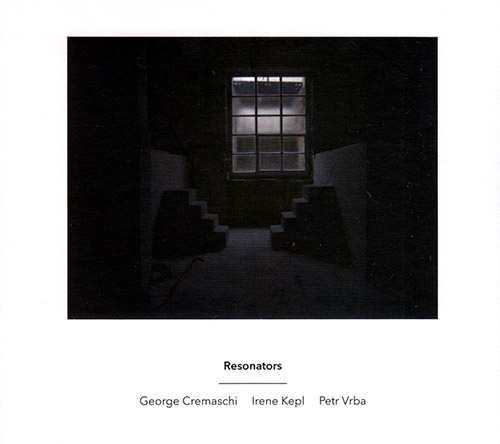
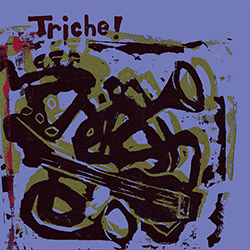
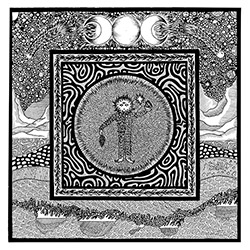
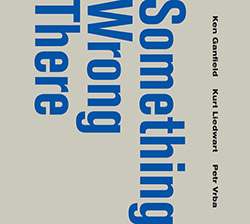



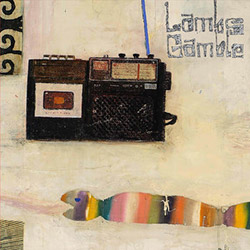


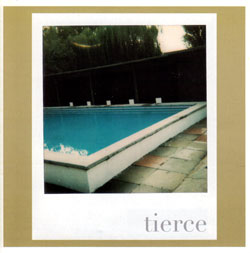
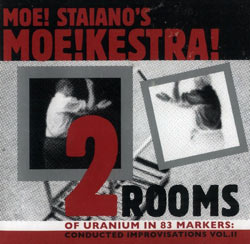

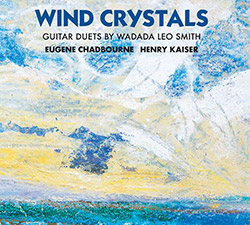
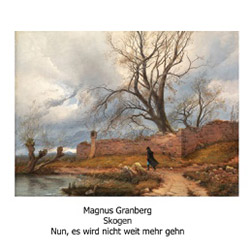
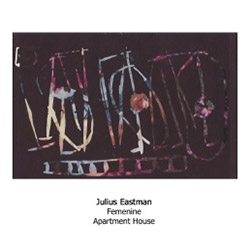
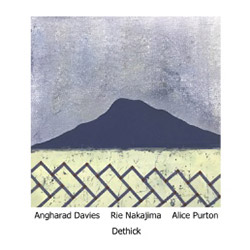

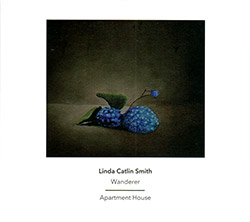






















![Barker / Parker / Irabagon: Bakunawa [VINYL]](https://www.teuthida.com/productImages/misc4/35533.jpg)
![Blaser, Samuel / Marc Ducret / Peter Bruun: Dark Was The Night, Cold Was The Ground [VINYL 10-inch]](https://www.teuthida.com/productImages/misc4/35492.jpg)










![Warren, Kenny (Warren / Hoffman / Ellman): Sweet World [VINYL]](https://www.teuthida.com/productImages/misc4/35451.jpg)


![Blake, Ran / Dave Knife Fabris: Live Amsterdam 2006, First Visit [CD + POSTCARDS]](https://www.teuthida.com/productImages/misc4/35275.jpg)
![Sanna, Claudio: Compositori Sardi Contemporanei II [2 CDs]](https://www.teuthida.com/productImages/misc4/35317.jpg)












![Nevai, Nandor: <<The PRICE of FRONTIER>> Book 1: FULK [BOOK + 4 CDs]](https://www.teuthida.com/productImages/misc4/35464.jpg)
![Nevai, Nandor: <<The PRICE of FRONTIER>> Book 2: MARTIAL [BOOK + 4 CDs]](https://www.teuthida.com/productImages/misc4/35465.jpg)
![Nevai, Nandor: <<The PRICE of FRONTIER>> Book 3: JASSOM [BOOK + 4 CDs]](https://www.teuthida.com/productImages/misc4/35466.jpg)
![Nevai, Nandor: <<The PRICE of FRONTIER>> Book 4: HARD-WON [BOOK + 4 CDs]](https://www.teuthida.com/productImages/misc4/35467.jpg)

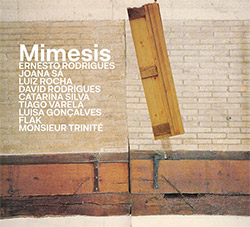




![DNS: Taking Big Bites Of The Khandas Three Cafes Deep [2 CDs]](https://www.teuthida.com/productImages/misc4/35334.jpg)




![Cleaver, Gerald: The Process [VINYL]](https://www.teuthida.com/productImages/misc4/34966.jpg)




![Alva Noto: HYbr:ID II [VINYL 2 LPs]](https://www.teuthida.com/productImages/misc4/35201.jpg)

![Baron, Derek / Luke Martin: Distinct and Concealed [CASSETTE + DOWNLOAD]](https://www.teuthida.com/productImages/misc4/35079.jpg)

![Lyle, Erica Dawn : Colonial Motels [CASSETTE + DOWNLOAD]](https://www.teuthida.com/productImages/misc4/35080.jpg)







![Alva Noto: HYbr:ID III [VINYL 2 LPs]](https://www.teuthida.com/productImages/misc4/35011.jpg)
![Kubisch, Christina / Trondheim Voices: Stromsanger 2022 For Six Voices And Electromagnetic Waves [VINYL]](https://www.teuthida.com/productImages/misc4/34628.jpg)








![Zurria, Manuel: Fame di Vento [3 CDs]](https://www.teuthida.com/productImages/misc4/35167.jpg)

![Granberg, Magnus / Nattens Inbrott / Skogen: Holde Traume, Kehret Wieder! [2 CDs]](https://www.teuthida.com/productImages/misc4/35038.jpg)
![Frey, Jurg: Outermost Melodie [2 CDs]](https://www.teuthida.com/productImages/misc4/35039.jpg)

![Pavone, Jessica: Reverse Bloom [VINYL]](https://www.teuthida.com/productImages/misc4/34895.jpg)




![Modney (Modney / Wooley / Gentile / Roberts / Pluta / Symthe / ...): Ascending Primes [2 CDs]](https://www.teuthida.com/productImages/misc4/34852.jpg)








![Elephant9 with Terje Rypdal: Catching Fire [VINYL 2 LPs]](https://www.teuthida.com/productImages/misc4/35355.jpg)
![Deerlady (Obomsawin, Mali / Magdalena Abrego): Greatest Hits [VINYL]](https://www.teuthida.com/productImages/misc4/34876.jpg)




![Haino, Keiji: Black Blues [2 CDs]](https://www.teuthida.com/productImages/misc4/35109.jpg)



![Surplus 1980: Illusion of Consistency [CD]](https://www.teuthida.com/productImages/misc4/35069.jpg)
![Staiano, Moe: Away Towards the Light [VINYL + DOWNLOAD]](https://www.teuthida.com/productImages/misc4/35037.jpg)
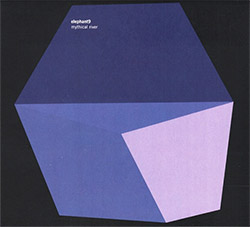



![Caveira (Gomes / Sousa / Abras / Ferrandini): Ficar Vivo [VINYL]](https://www.teuthida.com/productImages/misc4/34643.jpg)
![Gregg, J. J. / David Van Auken: Lunar Prairie [CD w/ DOWNLOAD]](https://www.teuthida.com/productImages/misc4/34611.jpg)

![Coultrain: Mundus [VINYL]](https://www.teuthida.com/productImages/misc4/32439.jpg)
![Mattin: Songbook #6 [VINYL]](https://www.teuthida.com/productImages/misc4/27317.jpg)
![Punkappella: Wake Up [7-inch VINYL]](https://www.teuthida.com/productImages/misc4/17519.jpg)
![Residents, The: WARNING: UNiNC.: Live And Experimental Recordings 1971-1972 [VINYL 2 LPs]](https://www.teuthida.com/productImages/misc4/31521.jpg)
![Coultrain: Phantasmagoria [VINYL]](https://www.teuthida.com/productImages/misc4/30142.jpg)
![Lennon, Sean Ono: Asterisms [VINYL]](https://www.teuthida.com/productImages/misc4/34517.jpg)

![Rotem Geffen: The Night Is The Night [VINYL]](https://www.teuthida.com/productImages/misc4/34631.jpg)
![Coley, Byron: Dating Tips for Touring Bands [VINYL]](https://www.teuthida.com/productImages/misc4/17906.jpg)

![Lost Kisses: My Life is Sad & Funny [DVD]](https://www.teuthida.com/productImages/misc4/lostKissesDVD.jpg)